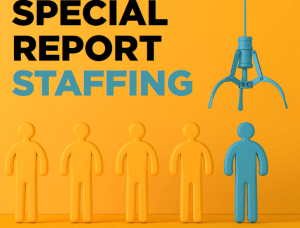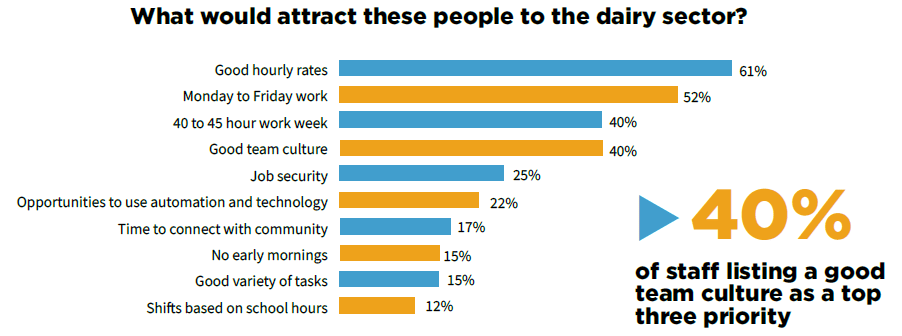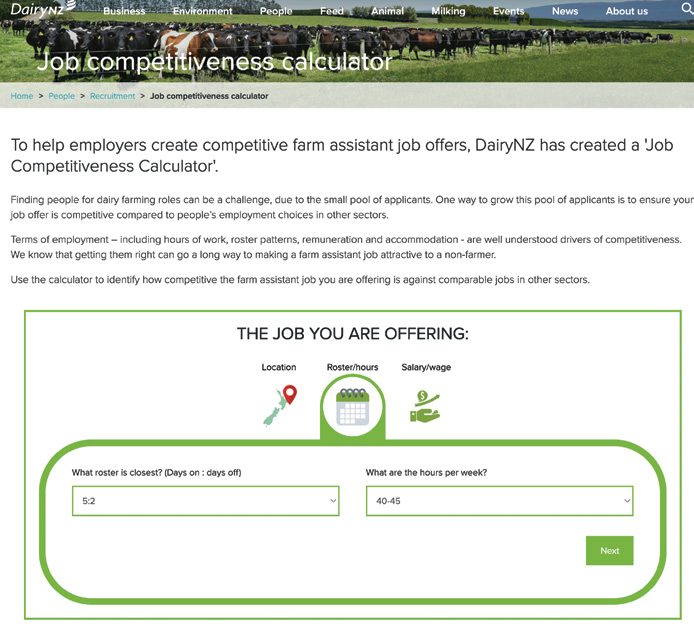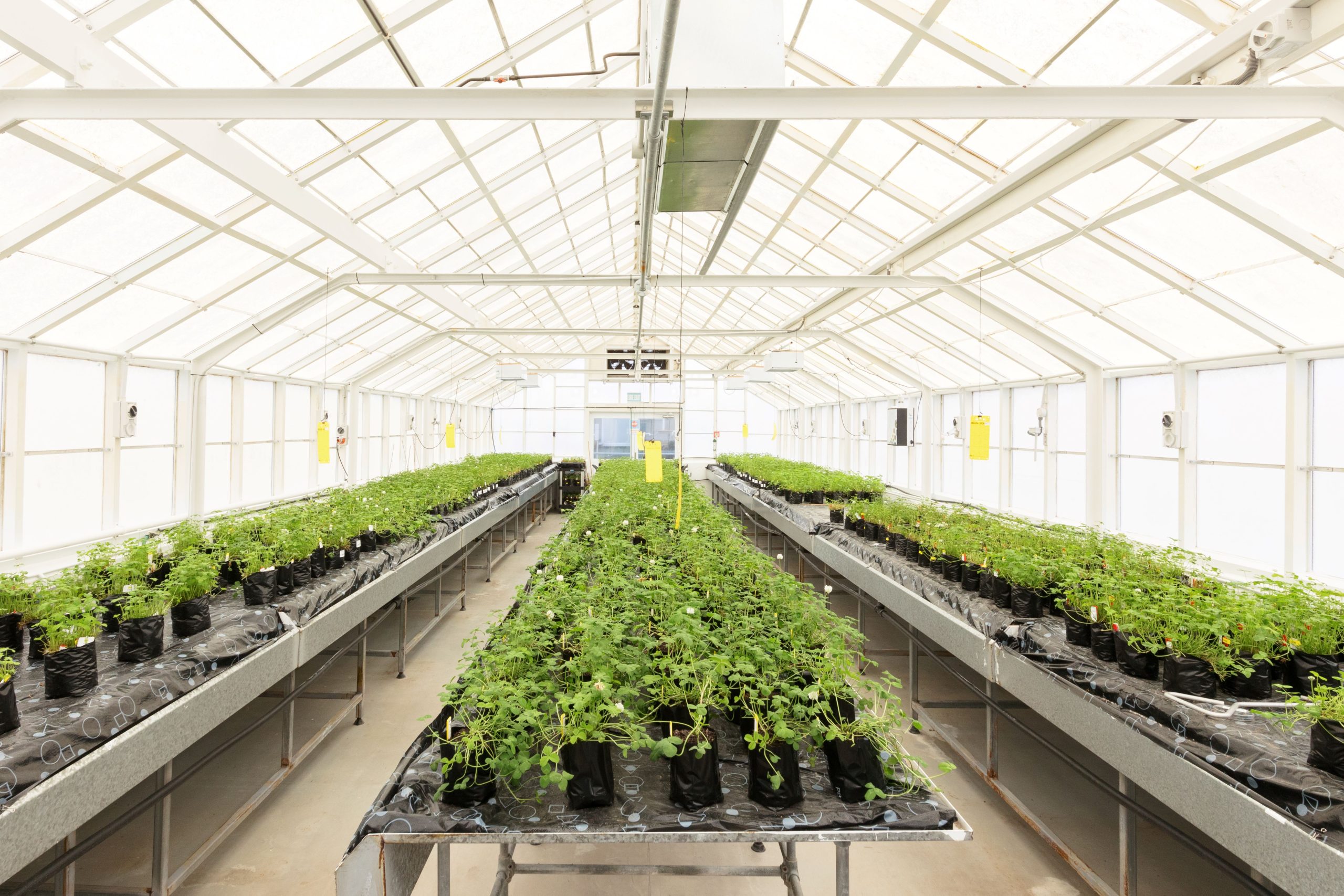How to get, and keep your staff
You’re not employing yourself when you’re looking to attract and then retain staff. Anne Lee.

 It’s time for a reality check, more than a cursory glance in the mirror and a solid look over the fence at what potential team members expect if workforce shortages are to be addressed.
It’s time for a reality check, more than a cursory glance in the mirror and a solid look over the fence at what potential team members expect if workforce shortages are to be addressed.
No8HR director Lee Astridge has been working with DairyNZ on developing strategies and practical tools that will help farmers attract and, importantly, retain staff.
It’s been part of the Great Futures in Dairying strategy – the sector’s plan for a resilient workforce and a plan that was also required by the government to support the sector’s requests for more immigrant labour.

Lee outlined the strategy at the joint DairyNZ, Dairy Women’s Network People Expo events and quickly reasserted advice from fellow presenter, economist Shamubeel Eaqub.
“You are not the audience.”
It’s a phrase that rang out time and time again and brought that slightly uncomfortable feeling to more than a few.
Just because you are happy to work long hours, get up while most of the population is still soundly asleep and work weekends or more than eight days in a row doesn’t mean everyone else is.
You’re not employing yourself when you’re looking to attract and then retain staff, Lee says.
So, you need to know what the people you’re trying to hire want and what they expect, she says.
Finding that out has been part of the strategy and for some farmers those wants and expectations may seem impractical and expensive.
“But they are the reality.
“When you see what the future looks like in terms of the availability of labour and the competitiveness of the market and you look at how much effort is going into getting people into the sector, putting them into the funnel only to have them leave – we’re blowing them out.
“If you ever want a definition of a waste of time – that’s it.”
Lee says in preparing the strategy, they spoke with farmers, surveyed employers and employees, sought input from sector and government stakeholders, reviewed past work, looked at other sectors and those overseas. The findings and subsequent 10-year plan can be summed up in three main approaches:
- Shape up – so the sector is competitive and farmers can grow and retain their people.
- Change the job – to provide modern, productive and safe workplaces.
- Look in new places – to attract a larger and more diverse talent pool.
“When we talked to farmers they echoed the findings of our research in their responses too.
“Sixty seven percent overwhelmingly said we need to shape up, 23% said we need to change the job and 7% said we need to look in new places.
“You know the issues and the problems, so what are some of the solutions?”
Unfortunately, there’s no silver bullet so a multi-level approach is going to be needed across all three strategies.
Shape up
Within the Shape Up focus, initiatives will train employers, build leadership skills, support farmers to settle in or onboard their staff and help them create better workplaces.
Year one of the plan has included:
- Setting up regional support people within DairyNZ dedicated to helping farmer groups develop and initiate regionally based solutions.
- Running the People Expo to share best practice and connect and inform farmers.
- The release of a Job Competitiveness Tool where farmers can upload details of a position they have and see how the market values that in terms of pay.
Farmers have said they want an employer accreditation programme and investigations are under way into that along with a study into factors around good employee retention.
One of the key aspects of shaping up is to know and meet the market – who are the potential workforce and what do they want?
The DairyNZ project, Know the Market, has focused on finding out exactly that. (pg96)
What do they want?
As part of the Know the Market project to gather information for the tool and to gain insights into what people’s expectations are, young people, aged between 18 and 35 years old, earning $70,000/year or less who were already working physical or trade-like jobs, were asked what would attract them into the dairy sector.
They were asked to select the top three aspects of the job, from a list, that could draw them away from their existing job and get them to consider dairying.
A good hourly rate was the number one factor with 61% including it in their top three.
“We also found that 67% of people wanted to be paid an hourly rate, not a salary.
“If you’re talking salary when you’re recruiting you are turning off two thirds of would-be employees so your pool of talent is slashed before you’ve even begun,” Lee says.
Further questioning about pay rates found that at $25/hour about 40% of respondents said they would consider working on a dairy farm but that number rose to about 60% if the pay rate moved to $30/hr.
At $35/hr, 80% of those replying to the survey said they’d consider the move.
While that might be a steep jump for a starting dairy assistant, telling the story of progression potential could lift the number interested in the sector.
With a jump from $25/hr to $35/hr about twice as many people would be interested in moving into the sector and at that level there would be more than enough people to address the workforce shortage.
For the final 20%, there didn’t appear to be any amount of money that would coax them.
Just over half the respondents listed Monday-to-Friday work among the top three most important factors to attract them to a dairy assistant role with 40% putting a 40-45 hour week among the top three and 40% also listing a good team culture as a top three priority.
While working a 40-45 hour week was among the top three, many respondents were happy to work more than 40 hours as long as they were paid the full hourly rate for the extra time.
Many were already working more than 40 hours-a-week in their current roles.
Rostered days off, the frequency of those days off and how those days fell in the week were a priority too with most respondents working Monday to Friday jobs.
The less-frequent or fewer in number those days off were, the more money people wanted to compensate.
A six-days-on, two-days-off roster met with an expectation of earning $4000 more per year while a six-days-on, one-day-off roster had a $19,000 extra per year expectation.
Early starts put off some although only 15% listed no early mornings among their top three requirements. While early for some means the alarm going off before 4.30am, the survey queried the views of people on a 5am start and asked how much more they would expect to be paid if they had to start at 5am rather than 6am.
For 42% of respondents, that would cost the farmer an extra $1000 and $2000 in wages but for 55% of respondents it would take an extra $2000 to $10,000 a year for them to get out of bed at that time.
Distance to town was an issue but it mattered a lot less than the frequency and number of days off.
Still, some of those surveyed wanted up to $6000/year more if they were to be enticed into the sector to compensate for living 21 to 30 minutes from town.
Team culture
Having a good team culture ranked highly among the list of things it would take to draw people away from their current positions and into the dairy sector with 40% of people ranking it among their top three – similar in ranking to hours worked and significantly more important than no early mornings.
Further questioning about what a good team culture looked like revealed that number one was having a manager who cares about you with 81% of people listing that as the top priority.
The second most important factor in creating a good team culture was career development and training opportunities with 68% of them putting it among their top two characteristics of a good team culture.
“People expect that – when you employ someone it’s part of the exchange.
“There’s an expectation you will grow and develop them and give them meaningful work. Gone are the days when we pay people and that’s enough.”
Flexible working hours was next at 43% followed by the opportunity for social connection.
Research into overseas workforce action plans found studies in the United Kingdom estimated just 4% of adults there consider all aspects of working on a dairy farm are acceptable.
“It shows you just how small and tight the pool of people who would consider working on a dairy farm is.
“They are like gold, so when you get them, we have to keep them because if we exit them and they have a poor experience – any of their mates won’t be interested either and that pool just keeps on shrinking.”
Farmers questioned whether there would be benefit to standardising some factors such as the inclusion of accommodation and rents charged.
But Lee urged them to think carefully about that because employment is one of the few areas where dairy farmers compete with each other. In Australia, where there’s a level of standardisation, there are also fair pay agreements that mean once people have worked 37 hours in a week, overtime rates kick in. The impact of valuing accommodation of full market rate can be seen by altering rates in the Job Competitiveness Calculator.
Job competitiveness calculator
The know the market project has provided numerous insights and has also been the basis of a new online tool called the Job Competitiveness Calculator.
The calculator enables farmers to put in key information on a job – such as their region, how long it takes to get to the nearest town, their roster, the hours per week, whether it’s a salaried position or hourly rate, what the annual remuneration is, what value is placed on accommodation if it’s provided and whether that’s the market rate for accommodation.
The calculator then adjusts the hourly rate to show what rate people out of the sector would value the job at.
A job the farmer is paying $28/hour for may be valued at just $25/hour by the market if the hours are long or the roster less agreeable.
The tool shows where the farmer’s hourly rate and the adjusted hourly rate sit relative to what other sectors earn – such as a labourer, apprentice tradesperson, driver or skilled production worker.
It also estimates how changing aspects of the job – such as shortening hours but keeping the take-home pay the same, improving the roster or increasing the wage – could improve the perceived adjusted hourly rate.
www.dairynz.co.nz/people/recruitment/job-competitiveness-calculator





